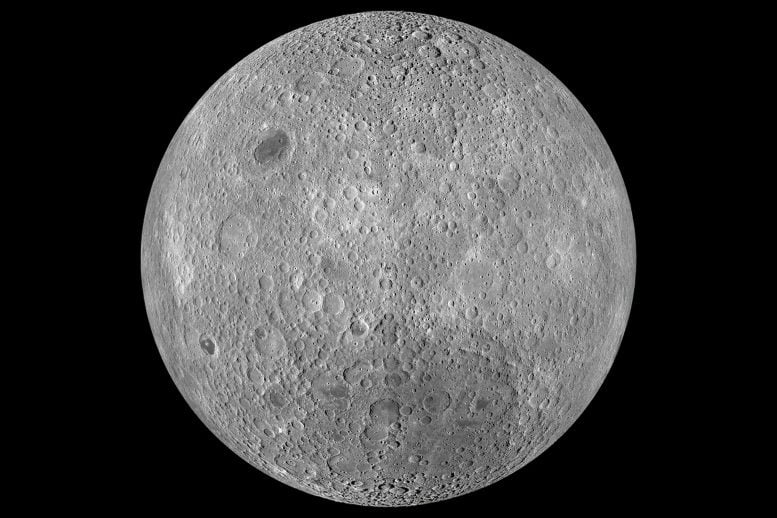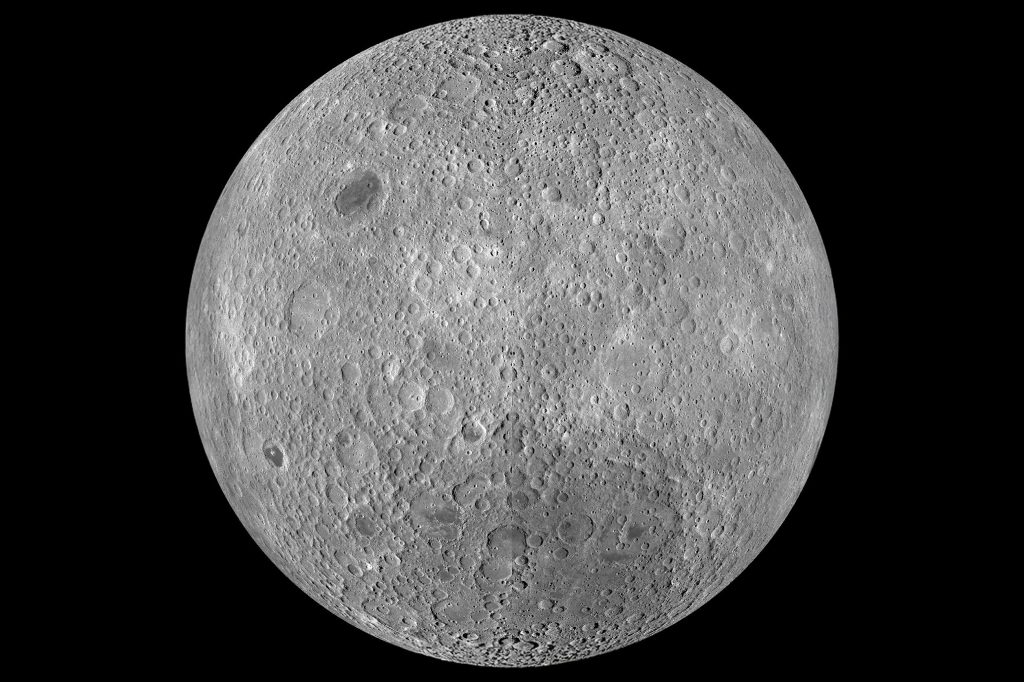
A massive impact may have temporarily strengthened the Moon’s weak magnetic field, producing a short-lived surge that became preserved in certain lunar rocks.
For decades, scientists have wrestled with a simple question: what happened to the Moon’s magnetism? Instruments on orbiting spacecraft once detected strong magnetic signatures in lunar surface rocks, indicating a powerful field in the past. Yet the moon itself has no inherent magnetism today.
Researchers at MIT now believe they may have uncovered the answer. Their hypothesis suggests that the Moon once possessed a faint magnetic field, and when a massive impact occurred, it produced a burst of plasma that temporarily strengthened this field, particularly on the far side of the Moon.
In findings published in Science Advances, the team used detailed simulations to test this scenario. They showed that an asteroid-scale collision could have created a cloud of charged particles that briefly surrounded the Moon. As the plasma swept around the lunar surface and collected on the side opposite the impact, it would have interacted with the Moon’s weak field, causing a short-lived but powerful amplification. During this fleeting episode, rocks in the region could have absorbed and preserved the record of the enhanced magnetism before it quickly faded.
This sequence of events offers a plausible explanation for the unusually magnetic rocks found near the Moon’s south pole, on the far side. Notably, the Imbrium basin—one of the largest known impact craters—lies almost exactly opposite this region on the near side. The researchers propose that the event that created the Imbrium basin likely generated the plasma cloud that set the process in motion.
“There are large parts of lunar magnetism that are still unexplained,” says lead author Isaac Narrett, a graduate student in the MIT Department of Earth, Atmospheric and Planetary Sciences (EAPS). “But the majority of the strong magnetic fields that are measured by orbiting spacecraft can be explained by this process — especially on the far side of the moon.”
Narrett’s co-authors include Rona Oran and Benjamin Weiss at MIT, along with Katarina Miljkovic at Curtin University, Yuxi Chen and Gábor Tóth at the University of Michigan at Ann Arbor, and Elias Mansbach PhD ’24 at Cambridge University. Nuno Loureiro, professor of nuclear science and engineering at MIT, also contributed insights and advice.
Tracing lunar magnetism
For many years, scientists have recognized that the Moon retains traces of an ancient magnetic field. Evidence comes both from Apollo-era lunar samples brought back in the 1960s and 70s and from remote measurements collected by orbiting spacecraft. These studies reveal that surface rocks, particularly those on the Moon’s far side, still carry signatures of magnetism.
One widely accepted explanation is that the Moon once generated a global magnetic field through a “dynamo” mechanism, driven by movement within a molten core. Earth produces its current magnetic field through such a process, and it is believed the Moon may have done something similar in the past. However, because the Moon’s core is much smaller, any dynamo it sustained would likely have been weak, insufficient to fully account for the strongly magnetized rocks found in certain regions.
Another possibility explored over the years is that a massive impact created plasma, which then temporarily boosted a weak magnetic field. In 2020, Oran and Weiss tested this scenario using simulations of a large collision, combined with the solar magnetic field, which reaches the Moon but is very faint at that distance.
Their simulations examined whether such an impact could strengthen the solar field enough to match the high levels of magnetism detected in lunar rocks. The results indicated it could not, effectively casting doubt on plasma-driven impacts as the main explanation for the Moon’s puzzling magnetic record.
A new simulation approach
But in their new study, the researchers took a different tack. Instead of accounting for the sun’s magnetic field, they assumed that the moon once hosted a dynamo that produced a magnetic field of its own, albeit a weak one. Given the size of its core, they estimated that such a field would have been about 1 microtesla, or 50 times weaker than the Earth’s field today.
From this starting point, the researchers simulated a large impact to the moon’s surface, similar to what would have created the Imbrium basin, on the moon’s near side. Using impact simulations from Katarina Miljkovic, the team then simulated the cloud of plasma that such an impact would have generated as the force of the impact vaporized the surface material. They adapted a second code, developed by collaborators at the University of Michigan, to simulate how the resulting plasma would flow and interact with the moon’s weak magnetic field.
These simulations showed that as a plasma cloud arose from the impact, some of it would have expanded into space, while the rest would stream around the moon and concentrate on the opposite side. There, the plasma would have compressed and briefly amplified the moon’s weak magnetic field. This entire process, from the moment the magnetic field was amplified to the time that it decays back to baseline, would have been incredibly fast — somewhere around 40 minutes, Narrett says.
Would this brief window have been enough for surrounding rocks to record the momentary magnetic spike? The researchers say, yes, with some help from another, impact-related effect.
Shocks aligning electrons
They found that an Imbrium-scale impact would have sent a pressure wave through the moon, similar to a seismic shock. These waves would have converged to the other side, where the shock would have “jittered” the surrounding rocks, briefly unsettling the rocks’ electrons — the subatomic particles that naturally orient their spins to any external magnetic field. The researchers suspect the rocks were shocked just as the impact’s plasma amplified the moon’s magnetic field. As the rocks’ electrons settled back, they assumed a new orientation, in line with the momentary high magnetic field.
“It’s as if you throw a 52-card deck in the air, in a magnetic field, and each card has a compass needle,” Weiss says. “When the cards settle back to the ground, they do so in a new orientation. That’s essentially the magnetization process.”
The researchers say this combination of a dynamo plus a large impact, coupled with the impact’s shockwave, is enough to explain the moon’s highly magnetized surface rocks — particularly on the far side. One way to know for sure is to directly sample the rocks for signs of shock, and high magnetism. This could be a possibility, as the rocks lie on the far side, near the lunar south pole, where missions such as NASA’s Artemis program plan to explore.
“For several decades, there’s been sort of a conundrum over the moon’s magnetism — is it from impacts or is it from a dynamo?” Oran says. “And here we’re saying, it’s a little bit of both. And it’s a testable hypothesis, which is nice.”
Reference: “Impact plasma amplification of the ancient lunar dynamo” by Isaac S. Narrett, Rona Oran, Yuxi Chen, Katarina Miljković, Gábor Tóth, Elias N. Mansbach and Benjamin P. Weiss, 23 May 2025, Science Advances.
DOI: 10.1126/sciadv.adr7401
The team’s simulations were carried out using the MIT SuperCloud. This research was supported, in part, by NASA.
Never miss a breakthrough: Join the SciTechDaily newsletter.

